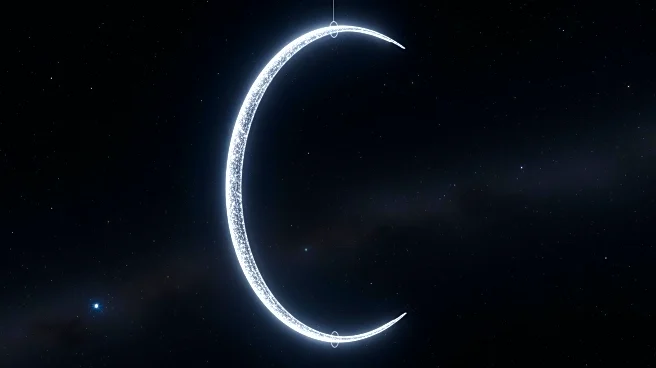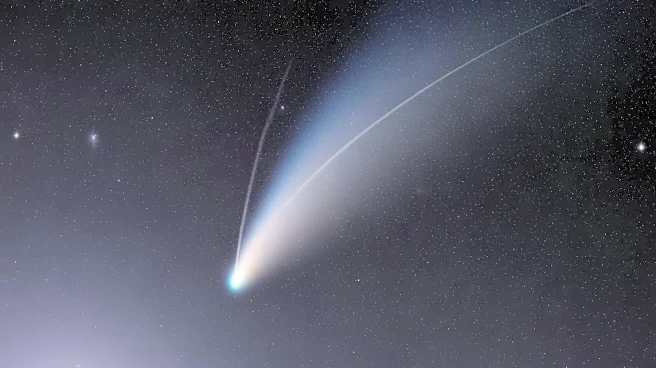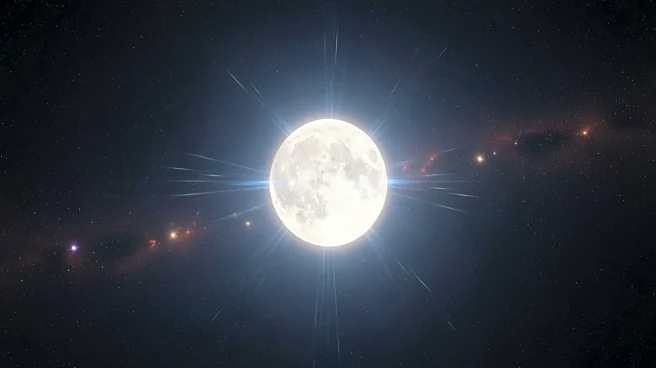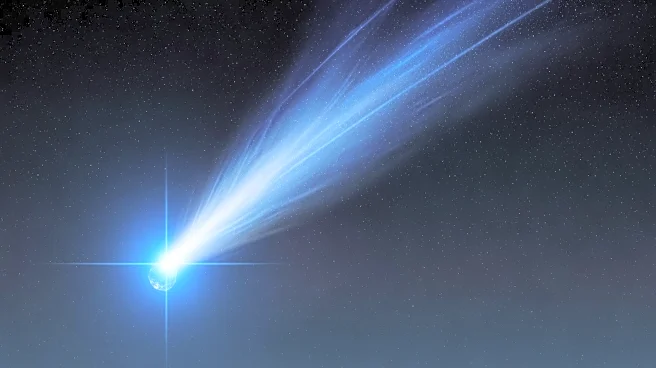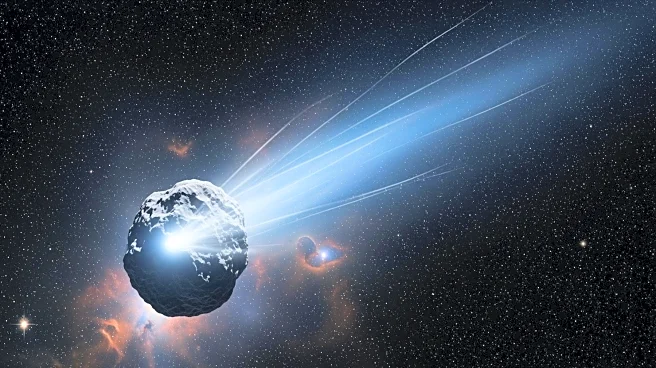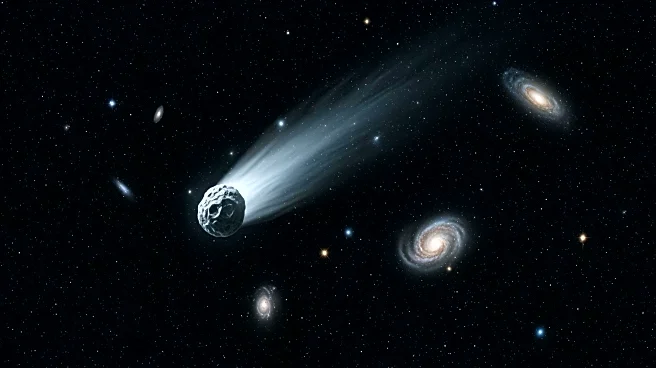What's Happening?
Saturn's rings are currently at their thinnest, providing a rare opportunity for astronomers and skywatchers to observe the planet's unique features. The rings, which are typically a prominent feature of
Saturn, have reached a minimum inclination of 0.37° as of November 23, 2025. This phenomenon occurs due to the orbital motion of Saturn and the changing view from Earth, which causes the rings to appear edge-on. As a result, the rings resemble a feather's edge rather than their usual expansive appearance. This period allows for the observation of Saturn's fainter moons, which are usually obscured by the glare of the rings. Amateur astronomers have been capturing images of the rings since mid-April, when they began to return to view after being swamped by solar glare.
Why It's Important?
The thinning of Saturn's rings presents a unique opportunity for astronomers to study the planet and its moons in greater detail. With the rings scattering less light, fainter moons such as Mimas and Hyperion become more visible, allowing for observations that are typically challenging. This event also highlights the dynamic nature of planetary systems and the intricate gravitational interactions that shape them. For the scientific community, these observations can provide insights into the composition and behavior of Saturn's rings and moons, contributing to our understanding of planetary formation and dynamics. Additionally, this period offers educational opportunities for amateur astronomers and the public to engage with astronomy and appreciate the complexities of our solar system.
What's Next?
As Saturn's rings continue to open, reaching a maximum inclination of 27° by 2032, astronomers will have more opportunities to study the planet's features. The current thinness of the rings will gradually change, allowing for different observational conditions over the coming years. During this time, astronomers will likely focus on capturing detailed images and data to analyze the structural and compositional changes in the rings. The visibility of Saturn's moons will also vary, providing ongoing opportunities for observation and study. As the rings open, the scientific community will continue to monitor and document these changes, contributing to the broader understanding of Saturn and its place in the solar system.
Beyond the Headlines
The thinning of Saturn's rings not only offers scientific insights but also raises questions about the long-term stability and evolution of planetary ring systems. Understanding the factors that influence ring dynamics can shed light on the processes that govern planetary systems beyond our own. This event also underscores the importance of continued observation and exploration of the solar system, as each new discovery adds to the collective knowledge of planetary science. The cultural fascination with Saturn and its rings continues to inspire both professional and amateur astronomers, fostering a sense of wonder and curiosity about the universe.
